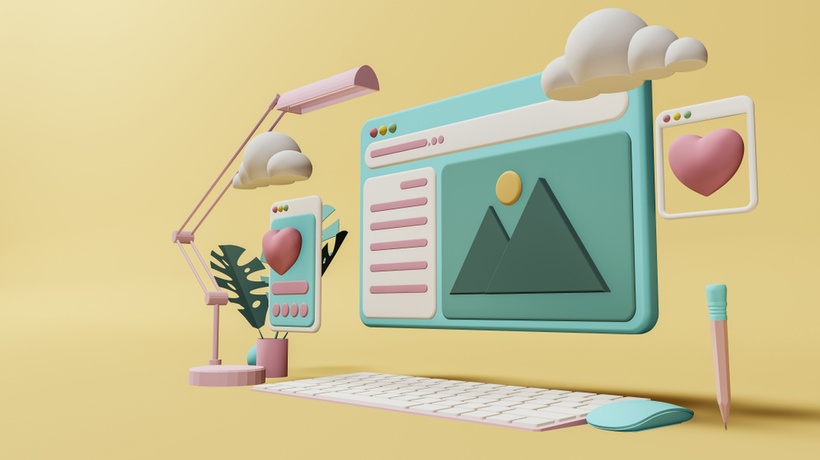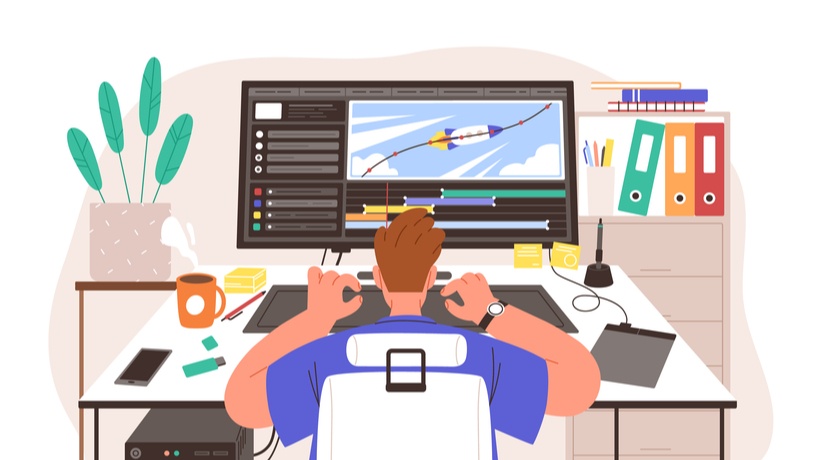Use Animation-Based Learning To Improve Your Online Courses
For decades now, we’ve been studying and searching for new ways to improve the efficiency of the process in which we pass knowledge from one to another. And as educational studies thrive, researchers have found that humans take in information better through multimedia learning, especially when it is incorporated into traditionally textual courses. And that’s where animation-based learning comes in.
What Is Animation-Based Learning?
While it sounds like it, animation-based learning is not all about visual materials. Rather, resources such as videos, infographics, and GIFs are used in tandem with existing resources when employing this method. This can be applied to many different fields, from scientific visualizations to corporate training schemes; from motion-graphic narratives used in primary courses to university-level demonstrations.
The Advantages Of Animation-Based Learning
As mentioned above, the beauty of animation-based learning is that it follows the latest studies of the human mind and its ability to absorb information. Wondering how exactly it does this? Let’s break it down.
Making Abstract Concepts Palpable
It doesn’t matter what you study, there are always going to be some concepts in a subject that are topics of the mind and are not actually visible. If you think about it, even something as concrete as math is highly theoretical and intangible for someone who’s never done multiplication and division before. And when you can’t see what you’re dealing with, sometimes it’s difficult to understand and remember the knowledge.
Here’s where animation comes in. This is a medium in which anything can happen and invisible concepts can take shape. It’s hard to collect enough pebbles to demonstrate 50 x 2 = 100, but it’s easy to do with the help of Adobe After Effects. That’s just a simple example. animation can be used to visualize complex concepts such as the “invisible hands” of supply and demand in economics, or chemical reactions in the brain during everyday interactions. The possibilities are endless.
Alleviating Pressure On Learners’ Imaginations
Animation can also demonstrate visible phenomena too, especially those that are not available in the classroom at that moment. This applies particularly well to scenario-based teaching and training and usually focuses on practical and social skills.
Think nurse training, for example. A major part of it is learning about the medicines and internal conditions, but they should also be aware of external symptoms and how to deal with them as well. To better prepare nurses for such situations, animated segments can be provided during their training so that they can see the procedures rather than imagine them in their heads. And when the time comes for them to apply their training, it’s much easier to carry things out.
Engaging The Learners
When thinking of studying, many of us will probably think about long hours of staring at textbooks, wondering if there’s a faster, more entertaining way to learn. Well, there actually is, in most cases, a learning method that’s more fun, and that’s using visual aid tools like animation.
Take TedEd videos—they’re designed to fit our attention spans and they provide useful information in colorful ways. These animations are optimal for learning since they draw the eyes and bring to life the issue at hand. They pique learners’ interests, and if they’re really successful, then the learner will go on to do some more research about the subject themselves!
Is Affordable And Can Be Watched Anywhere
Contrary to popular belief, quality animation can be produced on a budget. Perhaps you opt for whiteboard or 2D animation rather than the 3D style, but that doesn’t have to mean that the quality will be bad.
And what’s good is that once made, you can use that animation again and again, so the investment pays with time. It’s always available to you, and you can make it so even for your learners by putting it online. Learners can access the video through their phone or their computers—they can even download it!
How To Produce Animation-Based Learning
Of course, by no means are you expected to create animations by yourself, although you can if you’re particularly artistic and can maneuver editing software. Oftentimes, educators find animation studios to collaborate with in order to add life to their courses. Once you’ve found your preferred studio, the process goes as follows:
1. Briefing
This is going to be the basis of your partnership. You set out these terms from the very beginning: your objective and your target audience. These help both sides research the best way to present information as you go on.
If you’re working on your own, you’ll be researching your audience at this point and potentially picking out a suitable type of animation. If you’re working with a partner, they might have some industrial insight that can help you better decide, so maintain good and clear communication.
2. Writing A script
Once you’ve found a preferred style, it’s time to settle down and write your script. This depends a lot on the kind of video you’re producing. If, for instance, it’s a highly descriptive video (e.g. demonstrating Earth’s sediments’ formation), then the script will be quite short and straightforward. Consider adding some voice-over to provide extra information and a human touch.
For narrative videos, scripts may be more complex, with characters and dialogue. Always keep your audience in mind when you write the script so that you create the right content (not too easy, not too difficult) for them.
3. Storyboarding
This is where you hand the script over to the animator unless the animator is you. Animators will have specific insights about how the video should progress, how the background should be, and what visual effects can be used. Since this is the skeleton of your video, you should be able to check how well your final result will flow. Again, check also that whatever you have planned matches the abilities and expectations of your target audience.
4. Illustrating The Elements
Now we get into the fun bit of the process, where your imagination starts to come to life. From character design to the settings and background, the still models are first needed before vectors can be added and combined to make a video.
If you’re working with a studio, make sure that they run the designs through you so that their products match the images you have in mind. Be open and constructive when communicating and you should be fine!
If you’re working alone and are wary of this, don’t worry, there are plenty of stock vectors and designs available online for you. Take a look at Vecteezy, for instance.
5. Animating
This final step is when the stars align and things come together. From ideation to storylining to design, it’s finally time to harvest the fruits of your labor! To bring the elements together, remember to stick closely to your approved storyboard and use a good tool to make your video if you’re doing it on your own. If you’re not so invested in mastering Adobe After Effects, programs like PowToon, Vyond, and Moovly can make your life as an animator a little easier!
Conclusion
And that’s it, we’ve covered what animation-based learning is, its usefulness in online education, and the process of how such a visual aid tool can be made. If you’re hoping to improve your online course, why not use animation to do it?
References:
- Gero, A., Zoabi, W. and Sabag, N., 2014. Animation Based Learning Of Electronic Devices. . [online] Eric.ed.gov. Available at: <https://eric.ed.gov/?id=EJ1076142> [Accessed 24 May 2020].
- Kaliannan, M. and Chandran, S., 2012. Empowering Students through Outcome-Based Education (OBE). Research in Education, 87(1), pp.50-63.
- Mayer, R. and Moreno, R., 2002. Animation As An Aid To Multimedia Learning.
- Premalatha, K., 2019. Course and Program Outcomes Assessment Methods in Outcome-Based - Education: A Review. Journal of Education, 199(3), pp.111-127.
- Rieber, L., 1991. Animation, incidental learning, and continuing motivation. Journal of Educational Psychology, 83(3), pp.318-328.









